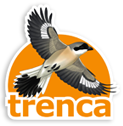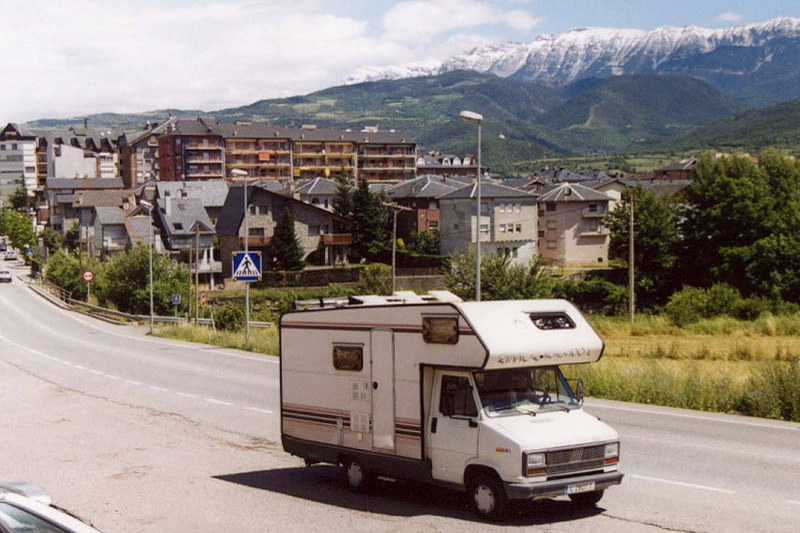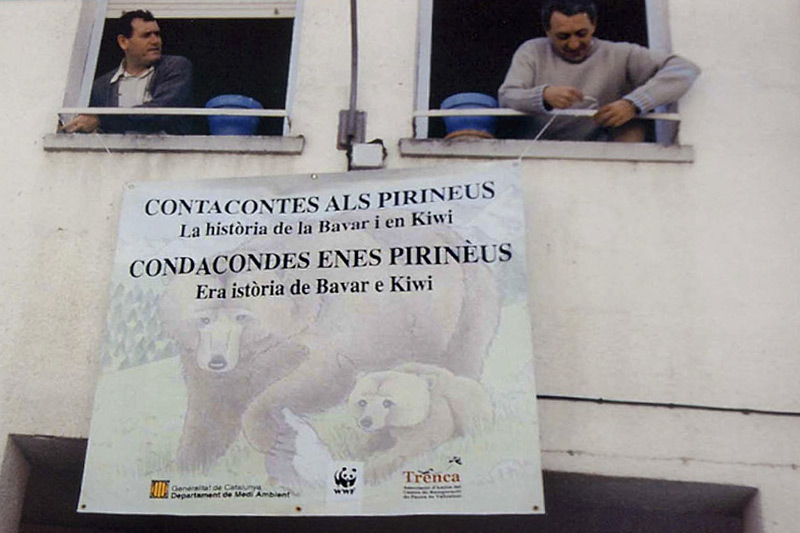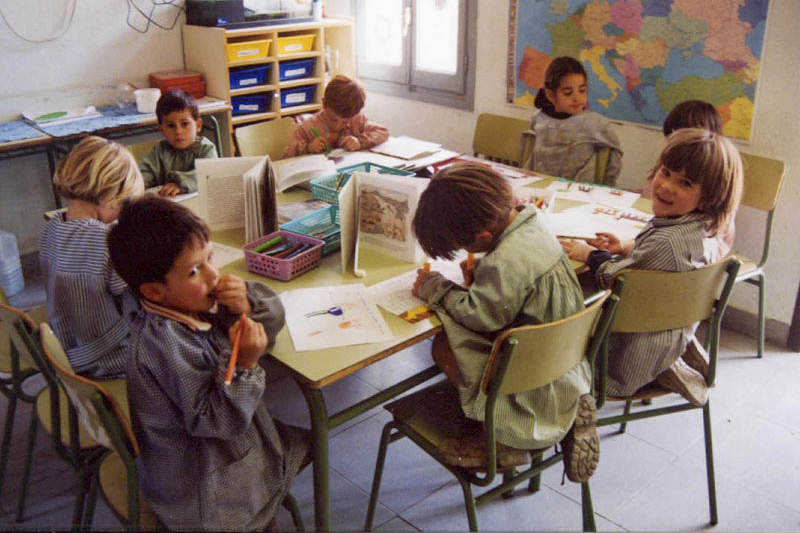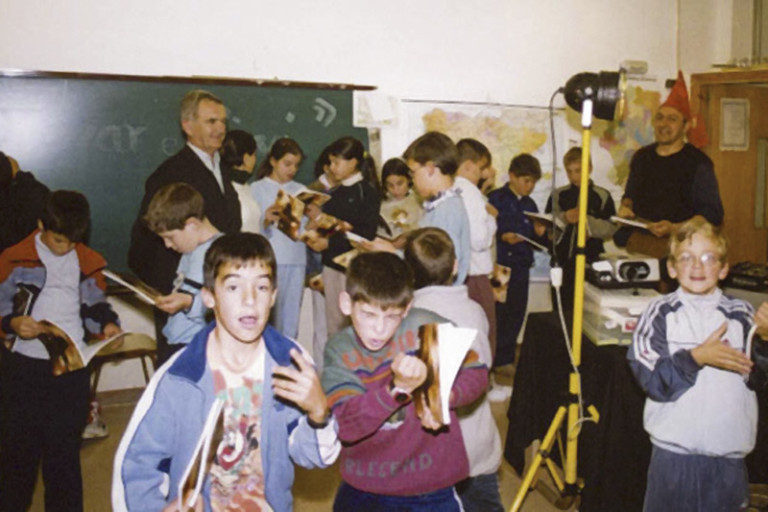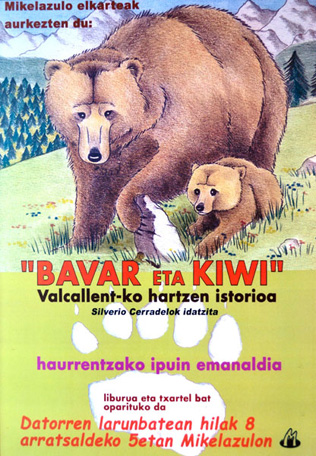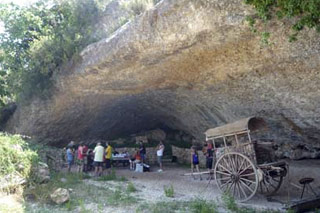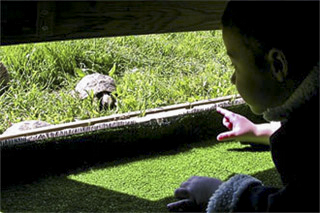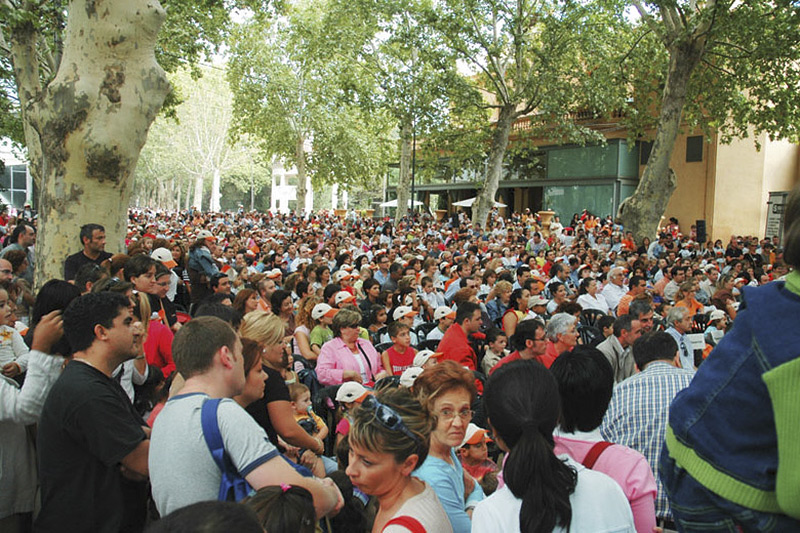Storytellers at the Pyrenees was an educational project that was developed in a threefold aspect: the recovery of the storytelling tradition, the promotion of reading and the environmental education. The idea was conceived by the Departament de Medi Ambient de la Generalitat de Catalunya, by WWF-España and by Trenca as a result of our concern for the conservation of the brown bear. It was developed in Catalonia, Aragon and Navarra. In Catalonia, the involvement of the Departament d’Ensenyament (Education Department, from the Autonomous Government of Catalonia) as well as the involvement of the Conselh Generau d’Aran (Autonomous Government of the Aran Valley) were crucial.
To describe this project we have to come back to the year 1991, when two brown bear cubs were admitted at the Wildlife Centre of Vallcalent: Bavar and Kiwi. The bear cubs hava had so many and so interesting adventures from the educational point of view, that in 1998 WWF-España and Trenca thought about publishing a story book based on their lifes.

Bavar and Kiwi got older and had babies. In the photograph, Bavar with two cubs, well known by all Vallcalent visitors. © Trenca
The story book was published at once in Aragonese, Aranese (Occitan), Basque, Castilian (Spanish) and Catalan –the five languages spoken in the Spanish Pyrenees–, so that it could be used as a tool for those languages learning in schools. In addition, by courtesy of Pagès publishing house, an edition in Galician was made, that was sent to Galicia educational centres.
This educational project consisted maninly in telling the story of two bears –Bavar and Kiwi–, with supporting images and sounds, at school classrooms or at town hall premises located in the villages of the Pyrenees, where the brown bear lives –or was living until recently–, included in Catalonia, Aragon and Navarra. Initially, the idea of the project was just to publish an educational story book on the brown bear and send it to schools. Afterwards, it was thought to make a stroytelling performance and, at the end, to hand over a story book to each member of the public.
Our idea was inspired, on the one hand, by the troubadours that went around from village to village and from court to court in the Middle Ages, and on the other hand, by stories and legends from the oral tradition that in the past were told at home, at the kitchen or around the fire, that magically brought together the members of a family or the neighbourhood. The fact that the storytelling tradition is being recovered today with great success by libraries and town halls encouraged us even more.
Banners with an illustration from the story book and the name of the project in the various languages of the Pyrenees were also produced. The banner was placed at the entrance or near the place where the story of Bavar and Kiwi was going to be told.
Before going to the Pyrenees, the project storytelling started at the escoles verdes (green schools) of Lleida. That served as a test and experience for the storytellers team, composed of at least two people.
Another aspect of the project was the production of an educational activities guide that teachers could carry out after the storytelling, taking advantage of the fact that all their students have listened to the same story and all of them have got a printed copy. The proposed activities were very different, from both the language area and the visual and plastic arts area as well as the natural sciences and environmental education area.
The story was told and given to primary and secundary school students. Despite the fact that the story was the same, that meant we had to prepare different oral versions, adapted to the different ages.
In summertime, the story of Bavar and Kiwi was told at the village squares, social premises or town hall premises of the Pyrenees, in performances for the general public. In the photographs we can see two different posters announcing these performances, one at the Aran Valley and another one at the Basque Country



